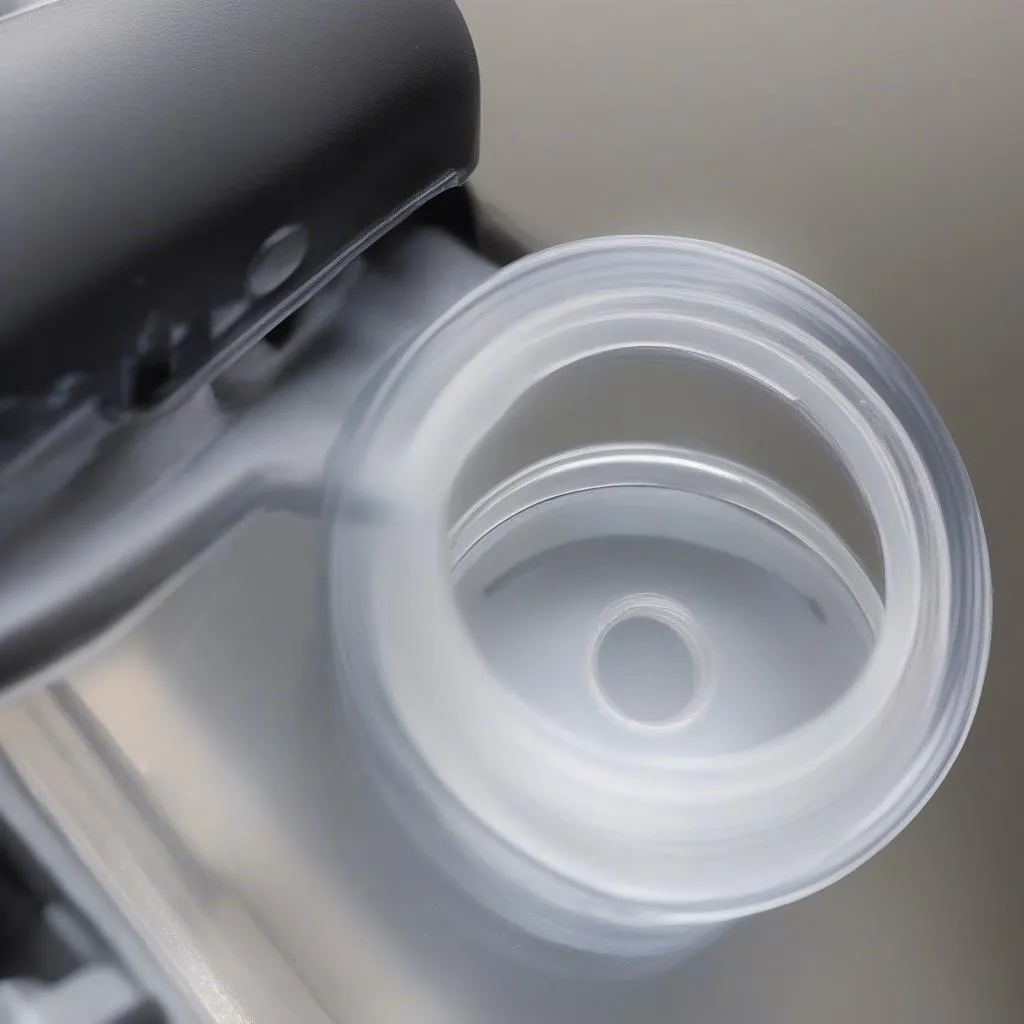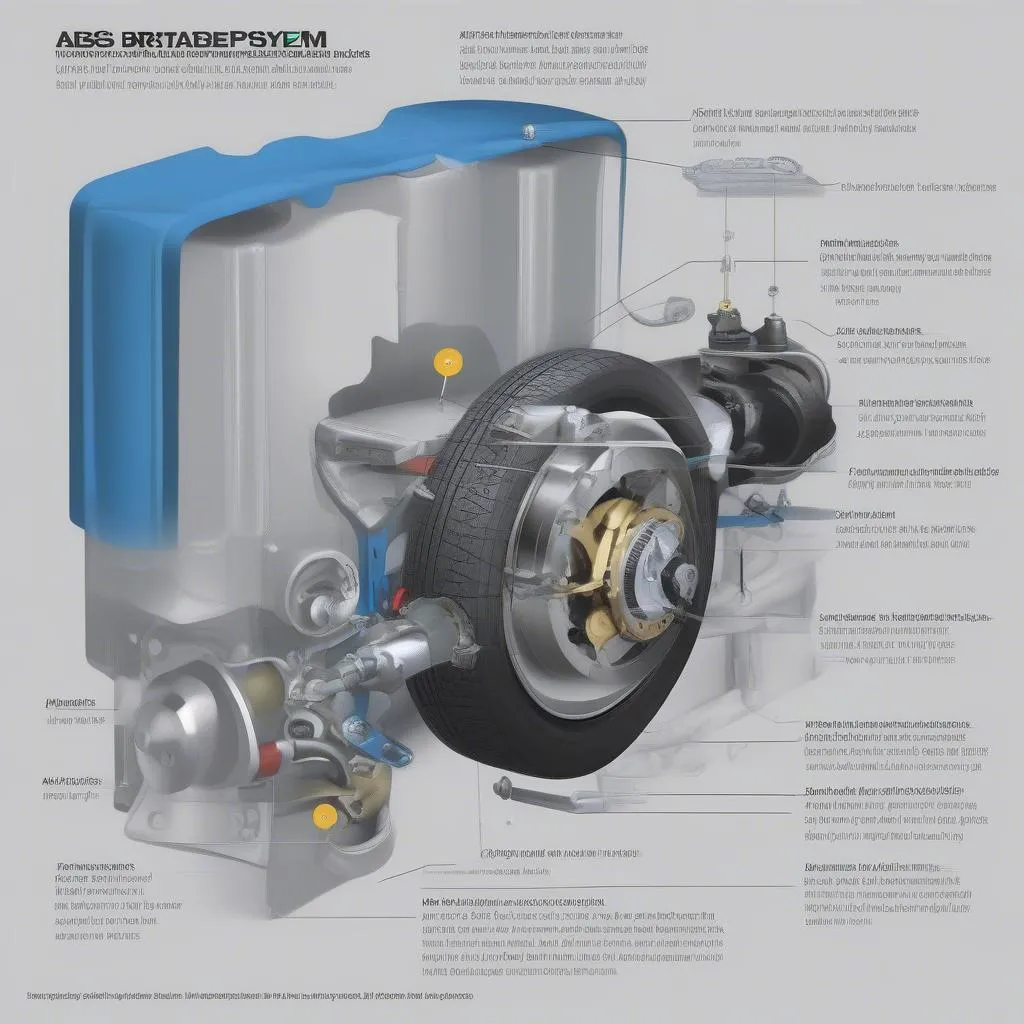Have you ever found yourself stuck on the side of the road with a malfunctioning ABS system, and your scan tool is nowhere to be found? This is a common predicament for many car owners, especially those who love to tinker with their own vehicles. But don’t worry, there’s a way to bleed your ABS module without a scan tool, and it’s not as complicated as you might think. In this article, we’ll dive deep into the process, explaining the why, what, and how of bleeding your ABS module, helping you regain control over your braking system.
Why Bleed the ABS Module?
Let’s get the basics out of the way. The ABS system, or Anti-lock Braking System, is a critical component of your car’s braking system, preventing your wheels from locking up during emergency braking. This is especially crucial in slippery conditions, such as rain or snow.
The ABS module is responsible for controlling the hydraulic pressure to each wheel, enabling the system to function properly. However, air can get trapped in the ABS hydraulic system, leading to issues like:
- Spongy brakes: You feel a soft, squishy feeling when you apply the brakes, making it harder to stop.
- ABS warning light: This light on your dashboard signals a potential problem with the ABS system.
- ABS malfunction: The ABS system may not function properly, leaving you vulnerable in emergency situations.
Bleeding the ABS module removes the air bubbles from the hydraulic lines, restoring proper pressure and ensuring your ABS system works as intended.
How to Bleed ABS Module Without Scan Tool: A Step-by-Step Guide
Now, let’s get into the nitty-gritty of bleeding your ABS module. Remember, the process can vary slightly depending on your specific vehicle make and model, so always consult your car’s owner’s manual for detailed instructions. Here’s a general guide:
1. Gather Your Tools
You’ll need a few essential tools for the job. Here’s what you’ll need:
- Brake fluid: It’s important to use the correct type of brake fluid for your vehicle, as recommended in your owner’s manual.
- Brake bleeder wrench: This specialized wrench helps open and close the bleeder valve on each wheel caliper.
- Clear tubing: This is used to connect the bleeder valve to a container, allowing you to collect the old brake fluid.
- Container: A glass jar or bottle to collect the brake fluid.
- Wrench: A wrench to loosen the brake lines.
- Gloves: Protect your hands from the messy brake fluid.
- Eye protection: Always wear safety glasses to protect your eyes from splashes.
2. Prepare Your Vehicle
- Park your vehicle on a level surface. This ensures the brake fluid flows evenly throughout the system.
- Engage the parking brake. This will prevent the vehicle from rolling.
- Turn the ignition on. This will power up the ABS module, allowing you to cycle through the bleeding process.
3. Locate the Bleeder Valves
- The bleeder valve is typically located on the top of each wheel caliper. Look for a small metal valve with a square or hexagonal opening.
- It’s crucial to follow the proper bleeding order. Consult your owner’s manual or a reputable repair manual to find the correct sequence for your vehicle.
4. Bleed the System
- Open the bleeder valve slightly with the bleeder wrench. You should see a small amount of brake fluid emerge.
- Have a helper press the brake pedal several times. This pushes the brake fluid through the system and forces air out of the lines.
- Maintain a consistent pressure on the brake pedal. Don’t let the pedal go all the way to the floor, as this can draw air back into the system.
- Continue bleeding until clear fluid emerges from the bleeder valve. This indicates that all the air has been expelled.
- Close the bleeder valve tightly.
- Repeat this process for each wheel caliper.
5. Check the Brake Fluid Level
- After bleeding all four wheels, check the brake fluid level in the reservoir. Top off the fluid to the appropriate level, as indicated in your owner’s manual.
- Make sure to use the correct type of brake fluid.
6. Test the Brakes
- Once you’ve completed the bleeding process, it’s important to test the brakes.
- Drive your vehicle at a safe speed and apply the brakes gently at first.
- If you feel any spongy brakes or notice the ABS warning light, you may need to re-bleed the system.
What to Do if You Can’t Bleed the ABS Module
In some cases, bleeding the ABS module without a scan tool may not be possible, particularly for newer vehicles with complex electronic systems. Here’s why:
- Electronic ABS systems: Modern ABS systems utilize electronic control units (ECUs) that require a scan tool for proper bleeding.
- ABS module programming: Some vehicles may require special programming procedures for the ABS module after bleeding.
Here’s what you can do if you’re unable to bleed your ABS module without a scan tool:
- Consult your owner’s manual: Check if your vehicle’s manual provides instructions on bleeding the ABS module.
- Visit a reputable repair shop: A qualified mechanic with a scan tool can properly bleed your ABS module.
- Utilize a professional scan tool: There are various scan tools available for different vehicle makes and models.
Common Questions About Bleeding ABS Modules
Can I bleed the ABS module without a scan tool on all vehicles?
Unfortunately, not all vehicles can be bled without a scan tool. Older models with simpler systems may be easier to bleed manually, but newer cars with complex electronic systems often require a scan tool for proper bleeding.
What are some common mistakes people make when bleeding ABS modules?
- Not using the correct bleeding order: Every vehicle has a specific bleeding sequence that must be followed.
- Not completely bleeding each caliper: If you don’t bleed each caliper thoroughly, air bubbles may remain in the system.
- Overfilling the brake fluid reservoir: Overfilling can lead to pressure buildup, damaging the system.
- Not using the correct brake fluid: Using the wrong type of brake fluid can damage the system.
What are the signs of a bad ABS module?
- ABS warning light on the dashboard: This is the most common indicator of a problem with the ABS module.
- Spongy brakes: This can indicate a problem with the ABS module or other parts of the braking system.
- ABS malfunction: The ABS system may not function properly in emergency braking situations.
Tips for Success
Here are a few tips to make the ABS module bleeding process smoother:
- Consult your owner’s manual: Always refer to your vehicle’s owner’s manual for specific instructions and bleeding procedures.
- Have a helper: Having someone to assist you can make the bleeding process much easier.
- Be patient: Bleeding the ABS module can take time, especially if the system is full of air.
- Work in a well-lit area: Make sure you can see the bleeder valves and the brake fluid level clearly.
- Protect yourself: Always wear safety glasses and gloves to protect yourself from brake fluid.
Let’s Connect!
We hope this guide has shed light on the process of bleeding your ABS module without a scan tool. If you have any further questions or need assistance with diagnostics tools or car repairs, feel free to contact us via Whatsapp: +84767531508. We have a team of experienced automotive professionals available 24/7 to support you!
 Bleeding ABS Module
Bleeding ABS Module
 Brake Fluid Change
Brake Fluid Change
 ABS System Diagram
ABS System Diagram


